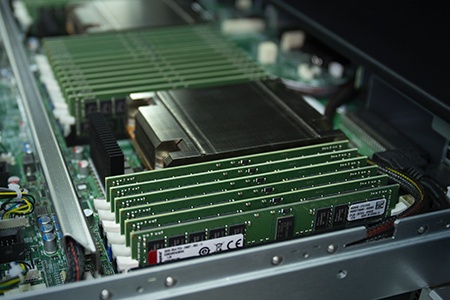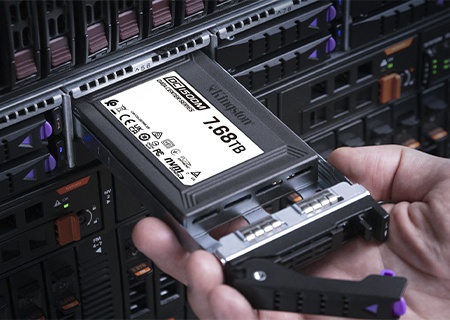Simon Besteman, of French and Dutch nationality, is a veteran of the ICT and data center industry.
He has over 20 years of experience with ISPs, vendors, and data centers. He has also worked as a management consultant for numerous organizations.
Simon has held various management positions in multinational companies in the areas of service, sales and marketing, operations management and strategic development.
At the moment, Simon serves as the Managing Director of the Dutch Cloud Community, a group of hosting companies.
As a leading industry representative, he often posts to industry and policy blogs. He is also a frequent speaker at congresses and conferences and participates in Dutch government round tables on telecommunications, data centers, and Internet regulations He sits on the boards of various industry groups, particularly in the fields of education, employment, and governance.
Options for upgrading your server hardware
In data centers, we have recently witnessed a unique set of IT infrastructure circumstances.
Inflation, rising energy costs, and long lead times for new servers have led many data centers and cloud service providers to put expansion plans on hold or even cancel them altogether.
However, the current issues with the cost and availability of new servers, combined with high energy prices and the difficulty in sourcing certain components, are really encouraging data centers and users to consider extending the life of their existing hardware.
Given the high price of new platforms and the added expense of new processors and cooling systems, it may make more sense to invest in upgrades to your current setup.
That’s why many choose to upgrade existing hardware, as it’s more cost-effective and environmentally friendly than buying the very latest platform. Here we look at the different possibilities and what to consider.
Extend life with memory
Before upgrading, it is important to identify the bottlenecks in your current installation for your specific use case.
One of these bottlenecks can be memory usage.

Note that filling the memory slot completely may affect memory bandwidth.
Memory is always a trade-off between speed and capacity.
Imagine a road on which would travel trucks carrying a large volume of goods at low speed, and high-performance sports cars with little space for luggage but able to travel at high speed.
Your CPU model and server platform, as well as how memory modules are distributed in the server, can affect bandwidth.
In most cases, more memory bandwidth can be achieved by using only one DIMM per channel (1DPC).
Adding a second DIMM per channel typically causes the memory clock to slow down.
However, insufficient memory capacity in your system can have a greater impact on performance than lower memory bandwidth.
If your servers have free memory slots, adding additional memory modules or upgrading to higher bandwidth memory modules ( such as DDR4 3200 MT/s ) may improve performance.
However, it is important to always follow the guidelines for adding memory provided by the system manufacturer to achieve optimal performance and reduce the risk of stability or compatibility issues.
Key Considerations for Upgrading Your Servers
Here are some important things to consider before upgrading your hardware:
- Check if your memory is full under normal working conditions. If this is the case and your servers still have free memory slots, you may want to consider adding additional memory modules (DIMMs).
- Replacing existing memory modules with new, higher-bandwidth modules (for example, replacing DDR4 2400 MT/s with DDR4 3200 MT/s) may also result in improved performance, depending on your usage and provided that the processor and host system support higher memory bandwidth.
- If you find that the bottleneck is in storage rather than memory, upgrading storage devices might be the right solution for you. If you only use HDDs in your current storage configuration, consider SSDs for better performance.
Storage is essential to extend the life of your servers

That said, replacing all hard drives may not be suitable for your use case or may be too expensive.
Also, using a SATA SSD for caching and HDDs for large capacity cold storage may suffice (again, it depends on your usage).
Replacing hard drives with SATA SSDs is simple because they use the same communication interface and protocol (AHCI).
But if you’re considering using PCIe NVMe SSDs , there are a few things to consider:
- Check that your motherboard and operating system support NVMe (most systems and operating systems released after 2015 usually support NVMe as standard).
- Select the right SSD with the right connector and dimensions for your PCIe NVMe storage array. Today, 2.5″ form factor PCIe NVMe SSDs with U.2 connectors ( like the Kingston DC1500M ) are quite common. There are several server models offered by different vendors that are compatible with this form factor. Please note that 2.5″ U.2 SSDs can come in different thicknesses: either 7mm or 15mm. Be sure to choose the right data center SSD that will fit your arrays.
- If your server does not have a bay that supports NVMe U.2 SSDs, you can replace the existing bay that supports SATA/SAS drives with an NVMe SSD bay. In this case, the items you should consider replacing are the drive cage (if the U.2 SSDs you want or have won’t fit in the existing cage), the existing backplane with a port/connection for U.2 SSDs, the RAID controller, and the cable connecting the backplane to the controller.
For the best quality of service (consistency of IOPS and low latency), it is better to consider NVMe PCIe SSDs for caching or for full storage pools.
The performance difference between SATA AHCI and PCIe NVMe SSDs is impressive.
It can be critical for latency-sensitive workloads and applications such as AI, machine learning, online transaction processing (OLTP) databases, big data analytics, cloud computing, operational databases (ODB), database applications, and data warehousing.
Learn more about Kingston’s NVMe: Benefits of NVMe for Business .
Upgrade and maintain
Besides upgrading memory and storage, other steps can be taken to extend the life of a server.
Although obvious to some, these steps are no less vital! Regular maintenance, such as cleaning the server, checking for dust buildup, and updating server software and drivers, can greatly improve server performance and longevity.
It’s also important to monitor server performance and usage to make sure it’s running optimally.
resolutionnotes.com Ask an Expert service can help you identify the best memory or storage solution for your existing hardware configuration.


